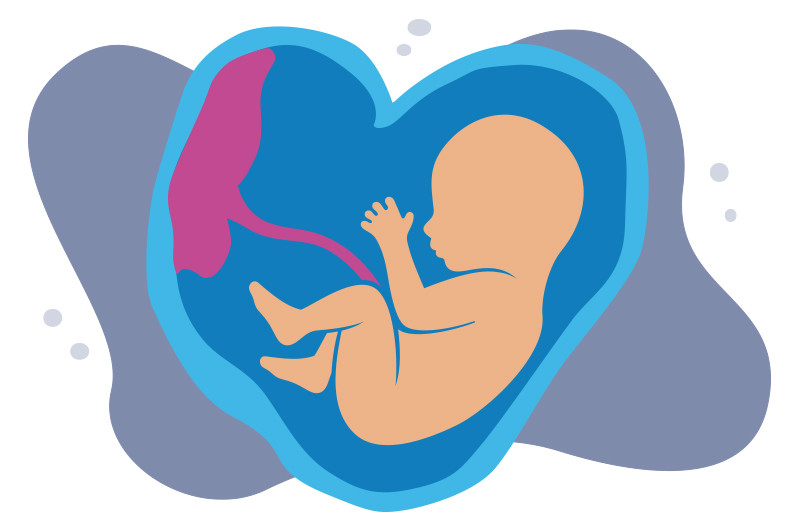The sooner the better: An argument for fetal MRI before 16 weeks

To date, fetal magnetic resonance imaging (MRI) has been limited to the mid-second or the third trimester of pregnancy. This timing has been based on the belief that MRIs performed too early couldn’t produce diagnostic images because of the small fetal size and normal fetal motion. In addition, although practice guidelines indicate that first-trimester imaging is appropriate if there is a clinical need, no scientific study has assessed the safety of these early fetal MRIs. Until now.
A recent study by Boston Children’s researchers re-evaluated these concerns, making an argument for the safety and accuracy of MRI earlier in pregnancy — as early as 12 weeks. The study looked at two MRI components — the strength of the magnets (typically 1.5 or 3 Tesla) and the specific absorption rate (SAR). The latter is the rate at which energy is absorbed by the body when exposed to an electromagnetic field or ultrasound; SAR is measured in watts per kilogram (W/kg).
Addressing lingering safety concerns
“Present data have shown no harmful effects of MRI on a developing fetus with either 1.5T or 3T magnets; however, most studies take place after 18 weeks at 1.5T,” says Judy Estroff, MD, fetal and neonatal imaging section chief in Boston Children’s Department of Radiology and Maternal Fetal Care Center (MFCC) in affiliation with Brigham and Women’s Hospital, and co-author of the study. “Therefore, although we were performing clinically necessary studies in younger fetuses, we wanted to address lingering concerns in the community around potential heating and confirm the safety of fetal MR before 16 weeks.”
Benefits of early fetal MRI over ultrasound
- superior soft tissue contrast
- ability to distinguish lung, liver, kidney, and bowel
- large field of view, including the entire uterus
- not limited by maternal obesity, fetal position, low amniotic fluid, or bones of the fetus’s skull
Based on theoretical concerns that the radiofrequency generated by MRI presents a threat of increased tissue temperature in the pregnant person and fetus, most studies investigating its effects have involved merging a model of a uterus and fetus with a model of a non-pregnant body, or manually adjusting a model of a fetus to account for different stages of pregnancy.
“These approaches poorly represent the actual physiology of a pregnancy,” Estroff says. This is why she initiated a study by Boston Children’s researchers to determine the potential temperature increases in fetuses as young as 13 weeks being imaged on both 1.5 and 3 Tesla scanners using sophisticated, realistic simulations.
Estroff and her team collaborated with Esra Turk, PhD, and her team under the leadership of Ellen Grant, MD, to build two realistic models of early second-trimester uteruses and fetuses and placed them in realistic pregnant body models representing 13 weeks, 19 weeks, and 28- and 29 weeks of gestation to investigate differences in potential heating with MRI. Simulations showed lower potential heating in the fetus in the early second-trimester model compared to the later gestational age (GA) model, suggesting even less risk to the youngest fetuses during MRI at 3T.
Addressing the clinical needs
Estroff and team evaluated 71 fetuses between April 2017 and October 2022, all referred to Boston Children’s MFCC for serious or complex anomalies. These cases were challenging to fully assess with ultrasound, so Estroff and her team turned to MRI. They performed fetal MRI between the GAs of 12 weeks, two days, and 16 weeks, six days (mean: 14.7 weeks). All studies were performed with a 3T magnet, observing standard safety guidelines.
Over the five-year study, Estroff and her team were able to obtain diagnostic MR images in all cases and weren’t limited by fetal size or motion. Advantages also included:
- a changed diagnosis or detection of an additional anomaly not previously seen or suspected on sonography
- immediate fetal counseling by a maternal-fetal medicine specialist, pediatric specialist, or genetic counselor.
“We found that fetal MRI at 3T is feasible, diagnostically accurate, and safe when performed between 12 and 17 weeks,” says Estroff. First-trimester MRI is now a standard clinical option for patients referred to the MFCC.
“Our hope is to provide our patients with an accurate early diagnosis and immediate counseling. We want our patients and their families to have as much information as possible about their pregnancy as soon as possible.”
Learn more about the Maternal Fetal Care Center.
Related Posts :
-

Changing the world: Baby Denver leads the way after first-of-its-kind procedure for VOGM
Denver Coleman is less than 2 months old, but she’s already helped blaze a trail for other children and families, ...
-

A legend for Zora: How genomic testing provides answers in the face of grief
So often after a perinatal loss, parents are left with uncertainty about what caused their baby’s death and the ...
-

‘I did it!’ Micah is thriving after maternal-fetal care for a CPAM
Dr. Marla Lipsyc-Sharf is no stranger to the field of medicine: As a medical oncology fellow, she’s familiar with ...
-

A complex repair for Ruby’s heart
When Rebecca and Michael Stewart learned their baby would be born with a congenital heart condition, they reacted as any ...





